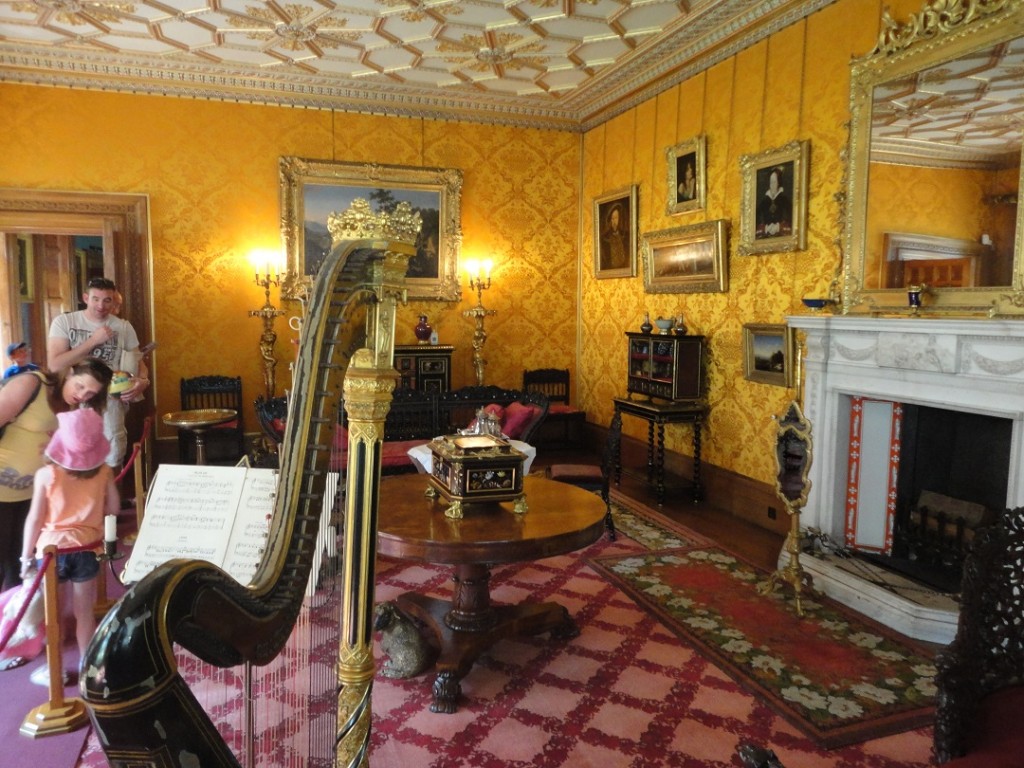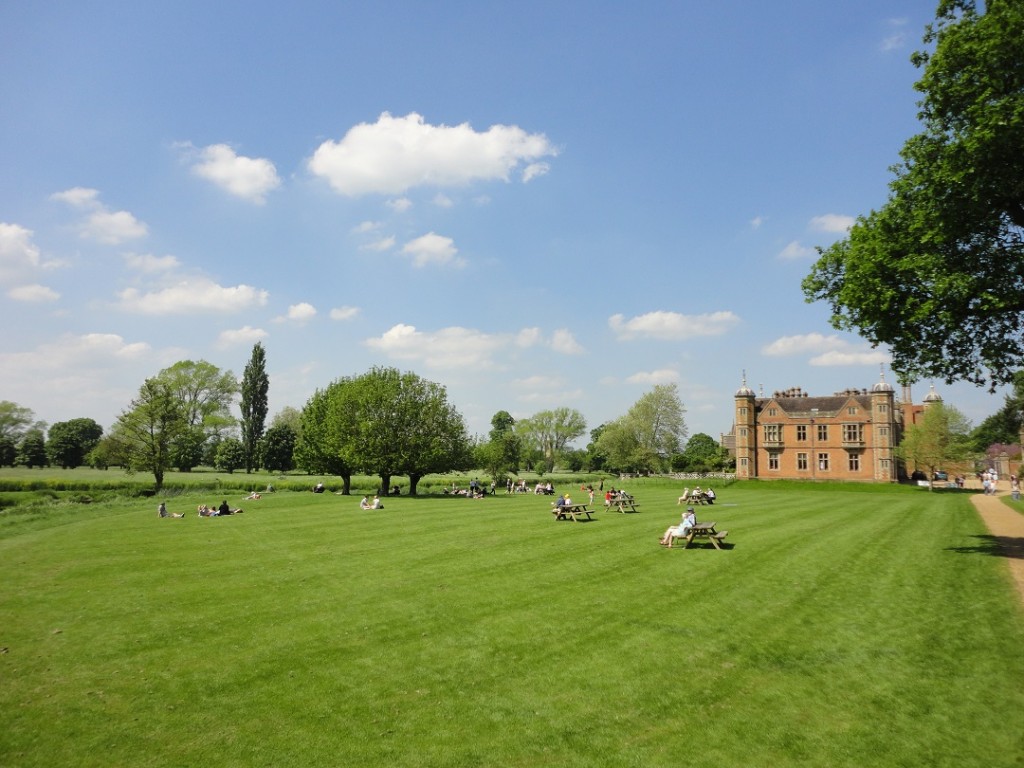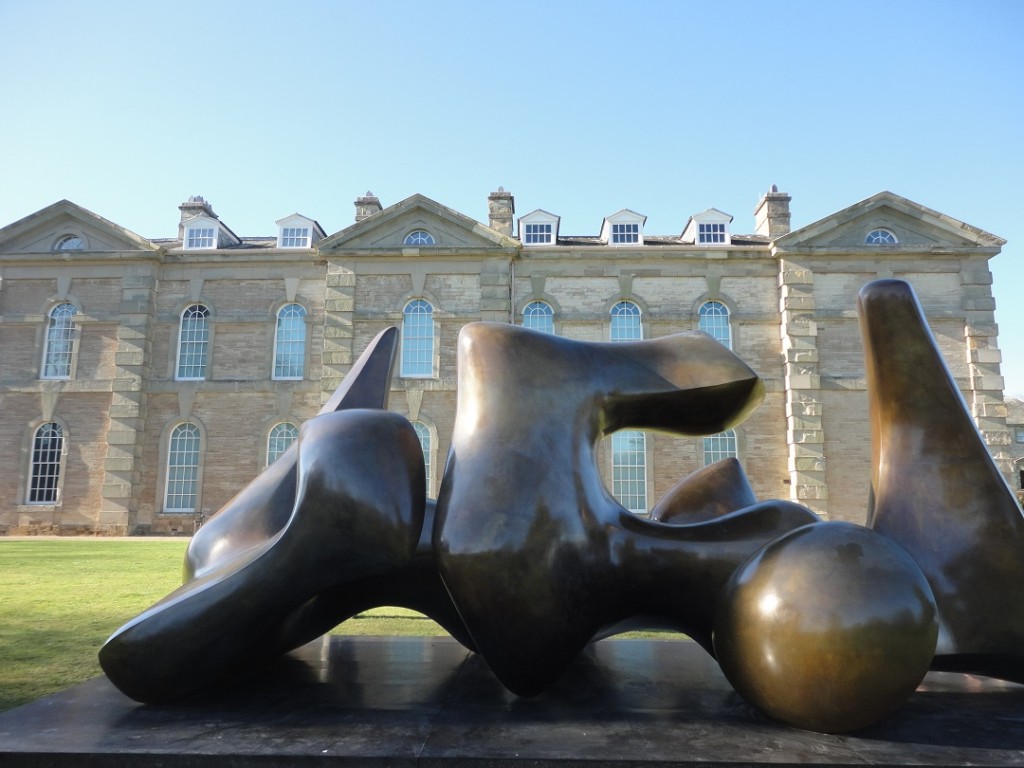Charlecote Park and Compton Verney were both built as grand private houses, occupied by their founding families until the 20th century. They are now both open to the public, but offer contrasting visions of Britain.
Originally published on Beacon.
Christmas provides the chance to gorge on culture as well as food. Christmas Day television included the Royal Ballet’s new interpretation of Shakespeare’s Winter’s Tale, featuring principal artist Edward Watson emphasising the madness of King Leontes in exiling his wife and daughter.
On heavy rotation elsewhere was another great British institution’s interpretation of Antony and Cleopatra. Filmed on the sumptuous set of the 1963 flop Cleopatra, this film manages to portray the seductiveness of its principal female character as well as the Bard’s cheerfully base sense of humour. Carry on Cleo, ‘based on an original idea by William Shakespeare’ as the credits announce, is of course the Carry On film that features Kenneth Williams’ Caesar crying: “Infamy, infamy, they’ve all got it in for me”.
With nearly as sumptuous a staging as Carry on Cleo, the main stage of the Royal Shakespeare Company in Stratford is currently showing Love’s Labour’s Lost and Love’s Labour’s Won, the latter better known as Much Ado About Nothing. The RSC has set the two plays just before and after the First World War. A shared cast plays, in many cases, similar roles in both productions: both have a verbally duelling couple at their centres – Berowne and Rosaline in Love’s Labour’s Lost, Benedick and Beatrice in Love’s Labour’s Won/Much Ado, as well other stock characters such as the mentally negligible policemen, Dull and Dogberry.
The two plays also share one of the most spectacular stage sets the RSC has built since reopening its main theatre. This set is modelled on Charlecote Park, a Tudor house a few miles upstream of Stratford on the Avon, where the young Shakespeare may have been caught poaching deer. The house was still in private hands at the time of the First World War, having been remodelled in the 19th century, and nicely links Shakespeare’s era with that of the staging.
The Charlecote set also allows the RSC to show off the capabilities of its main theatre: just before Christmas I was part of a Love’s Labour’s Lost audience that found itself enthusiastically applauding not actors but the entrance of a facsimile of the building’s roof (below), floating up from the depths to replace what had seconds previously been a neatly-striped lawn.
Since just after the Second World War, Charlecote Park has been owned by the National Trust. Like most houses run by the trust, that means it is effectively a museum of itself, a building-sized time capsule, frozen at some earlier point in its history, in this case Victorian. George and Mary Lucy, members of the same family that had built the house, modernised Charlecote’s fabric and interior, the latter with furnishings from across Europe.* After the death of her husband, in 1851 Mary Lucy pulled down the centuries-old church at the edge of the estate, and built a new one in his memory – with central heating.

Charlecote’s modernising days are behind it. Like most National Trust stately homes, many rooms are divided, with visitors behind film premiere-style ropes. The rich and famous aren’t on the other side of the rope, just the beautiful rooms they once lived in. Like many such time capsule houses, it features a fabulously-laid dinner table from which no-one will eat, unplayed musical instruments and an enormous snooker table, on which one hopes the staff and volunteers play a frame or two after everyone else has gone home.
It would be unfair to make Charlecote sound stuffy. When I visited last May, the staff had hidden small toy deer around the interior, for children of all ages to spot. The gardens, for which the National Trust sells cheap tickets, were being enjoyed by hundreds of people, playing, picnicking and photographing a temperate, fair of face summer’s day. It might have still been the 19th century within, but it was 2014 outside. But perhaps because the day outside was so full of life, the beautifully-preserved Victorian interior seemed rather faded.

As is the case with several National Trust properties, the original owners haven’t actually left: Sir Edmund Fairfax-Lucy and his family still live in one private wing. (Many houses were given to the National Trust just after the Second World War as a way for the families concerned to stay in a corner of their ancestral homes, as an alternative to selling up completely to pay heavy death duties.) But there’s no chance of Charlecote Park being rebooted as it was in the 19th century; its main role is not to change.
State of the art
Four miles to the south-east of Charlecote, just across the Roman Fosse Way, is another former grand home: Compton Verney, first built by the Verney family in the 15th century. Like Charlecote Park, it was rebuilt during its history, but in its case more obviously – its Tudor exterior was entirely replaced in the 18th century’s classical style. Both houses also had their grounds reworked by the master landscaper ‘Capability’ Brown, who specialised in taking the greatest pains to create the illusion of a natural English landscape.
Compton Verney could equally have inspired the RSC’s staging, as it was still inhabited before and after the First World War. But the tenure of the Verneys didn’t last much longer. The 19th baron wrote a book about Britain’s great houses being sold by impoverished aristocrats to men of commerce – having done this himself in 1921, when the house was bought by Joseph Watson, who had made a fortune selling the family’s soap business to the Lever Brothers. This business was one of the foundations of the Anglo-Dutch consumer goods group Unilever, which still makes soap under the Lifebuoy brand Lever Brothers launched in 1894.
Joseph Watson hoped to use Compton Verney to clean up his social image. When awarded a peerage, he made himself Lord Manton of Compton Verney – a new peer chooses where to peer over, as long as no-one else has bagged it. He also decided to lead the Warwickshire Hunt… and on March 1922, just months after getting his peerage and before even moving in to Compton Verney, he fell from his horse while out with the hunt, dead from a heart attack.
The house then passed through a series of owners. The Army requisitioned it during the Second World War to research smokescreens, and it was later used by television and film companies as a set, but was never again inhabited. By the 1980s, it was semi-derelict.
Compton Verney was bought from its founding family with money from a Merseyside-based business, Lever Brothers; another Merseyside business, Littlewoods, generated the money to save it. Sir Peter Moores, the son of the founder of the retailing and gambling group, bought the property in 1993 through his foundation. It took 11 years to renovate the house, not as a recreation of its earlier days but as an art gallery.

Most art galleries in Britain are run by parts of government. Compton Verney receives government and lottery funding, but has been created by individuals: Sir Peter Moores, whose interests are reflected in the gallery’s permanent collection of paintings from Naples, bronzes from China and portraits from Britain; art dealer Andreas Kalman, who sold it his collection of English folk art; and textile and graphic designer Enid Marx, who bequeathed her own collection of textiles, graphics and English folk art in 1998. As a result, its collection has a strong character to it, rooted in Britain through folk art (anything created by someone not usually seen as an artist, including the likes of pub signs) but reaching out beyond the seas. It attracts excellent national and international touring exhibitions, including last year work by Claude Rodin and Henry Moore.
The ability to stay rooted while welcoming the world; the will to re-order, rebuild and refresh; remembering the past, but preferring the present and the future: these are signs of confidence. Charlecote Park had them when it was a family home in the Victorian era. After decades of neglect, as a beautifully-redeveloped art gallery Compton Verney has them now.
There are second, third, fourth and fifth acts in the lives of great British houses, if someone cares to write the cheques for them. Such houses often serve as synecdoches for Britain itself: it is a fine judgement as to whether Britain is currently better symbolised by the time capsule of Charlecote Park, or the modern gallery of Compton Verney.
* Thanks to Ruth Webb, who works at Charlecote Park and points out that the two houses have links: Mary Lucy, mentioned above, gave birth to a son at Compton Verney.
